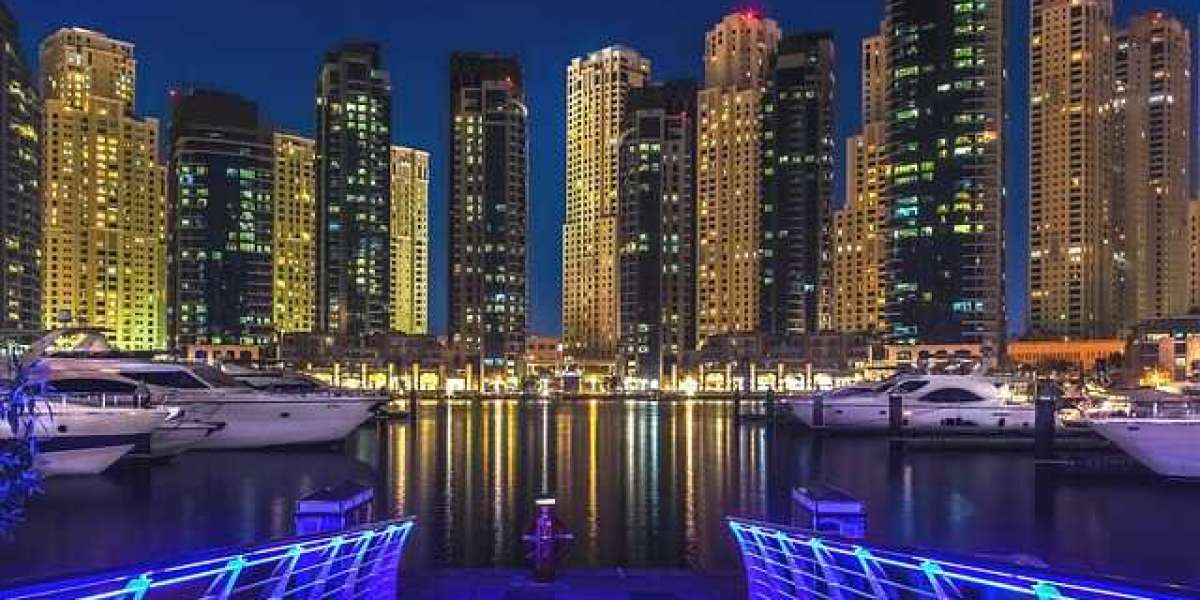Dubai may be globally known for its futuristic skyline, luxury shopping, and world-class infrastructure, but beneath its modern veneer lies a deep-rooted cultural legacy that continues to shape the city's identity. For first-time travelers and seasoned explorers alike, discovering Dubai’s heritage is an essential part of understanding what makes this city more than just a travel destination—it’s a living story of transformation.
From traditional Bedouin customs and Islamic architecture to vibrant souks and centuries-old trade practices, Dubai offers a rich blend of old and new. Once your Dubai visa is secured, stepping into this cultural journey becomes not only possible but unforgettable.
Al Fahidi Historical Neighborhood: Where Time Stands Still
One of the best starting points to explore Dubai’s past is the Al Fahidi Historical Neighborhood (also known as Al Bastakiya). This restored district along Dubai Creek is a vivid reminder of life in the pre-oil era. Characterized by its narrow alleyways, wind-tower architecture, and sand-colored buildings, Al Fahidi offers a stark yet charming contrast to Dubai’s glimmering skyline.
The area is home to several museums, including the Dubai Museum and the Coffee Museum. Walking through its cobblestone paths, you'll find art galleries, cultural foundations, and traditional Emirati houses that have stood for generations. Visiting Al Fahidi provides travelers with insight into the city’s roots before its rise as a global metropolis.
Related Article: Apply for dubai visa.
Traditional Souks: A Journey Through Time
No cultural experience in Dubai is complete without visiting the traditional souks. Located in the Deira and Bur Dubai districts, these marketplaces transport you to the time when Dubai was a trading hub between East and West. The Gold Souk dazzles with intricate jewelry and bright displays, while the Spice Souk fills the air with exotic aromas of saffron, cardamom, and frankincense.
Not far away, the Textile Souk invites visitors to touch and feel colorful fabrics, pashminas, and embroidered garments. Beyond shopping, these souks offer the opportunity to practice the art of bargaining and engage with merchants, many of whom come from generations of traders. For travelers looking to Apply Dubai Visa for India Citizens, adding these markets to an itinerary showcases Dubai's deep connection to the Indian subcontinent through trade and culture.
The Dubai Creek: Cradle of Commerce and Culture
Dubai’s early development was closely tied to the Dubai Creek, a natural inlet that once served as the main artery of commerce. Today, the creek still pulses with life. Traditional wooden boats called abras ferry passengers between Deira and Bur Dubai for a minimal fee, preserving an age-old method of transport.
A stroll along the creekside promenade allows travelers to absorb scenic views and witness daily routines that haven’t changed in decades. Dhow cruises in the evening offer a blend of relaxation and heritage, as these traditional vessels have long been used for pearl diving and trade.
Sheikh Mohammed Centre for Cultural Understanding (SMCCU)
For visitors truly curious about Emirati traditions, the Sheikh Mohammed Centre for Cultural Understanding (SMCCU) offers an open and welcoming space to learn. Located in the Al Fahidi district, this center provides guided heritage tours, traditional meals, and engaging QA sessions with Emirati hosts. Its motto, “Open Doors. Open Minds,” reflects a genuine desire to bridge cultural gaps through dialogue and shared experiences.
Topics covered include Emirati dress, religion, education, and family life. This experience is especially valuable for first-time visitors seeking authentic insights into the UAE’s social fabric.
Islamic Architecture and Mosques
Dubai’s mosques are more than places of worship—they’re expressions of architectural beauty and spiritual depth. The Jumeirah Mosque is one of the most iconic in the city, open to non-Muslim visitors through guided tours that promote cultural exchange. With its elegant white facade, twin minarets, and intricate carvings, it stands as a symbol of Islamic heritage and hospitality.
Visitors are expected to dress modestly, and women may be asked to cover their hair. Inside, tour guides explain religious customs, prayer rituals, and the mosque’s architecture, offering respectful insight into the role of Islam in daily Emirati life.
Emirati Cuisine: A Taste of Tradition
Food is a vital part of any cultural experience, and Dubai’s culinary scene tells a story of regional influences and local traditions. Emirati cuisine, often overshadowed by global offerings in the city, is deeply flavorful and reflective of the desert environment. Dishes like harees (cracked wheat with meat), machboos (spiced rice with lamb or chicken), and luqaimat (sweet dumplings) reveal the historical resilience and creativity of local cooks.
Several restaurants and cultural centers now specialize in serving traditional meals, some of which are set in homes that mimic ancient majlis (seating rooms). These communal spaces encourage conversation and cultural connection over shared plates and Arabic coffee.
Festivals and Heritage Events
Dubai’s cultural calendar is dotted with events that celebrate Emirati heritage. The Dubai Shopping Festival, while famous for its retail discounts, also hosts traditional music, dance, and heritage villages that recreate scenes from old desert life. The National Day in December is another great time to witness patriotic displays, folk performances, and public storytelling sessions.
In addition, the Al Marmoom Heritage Festival and the Camel Racing Season bring travelers closer to rural Emirati traditions that still thrive today. Watching camels race in the desert, accompanied by cheers from local spectators, offers a one-of-a-kind cultural experience.
Heritage Sites Beyond the City
For those willing to travel a bit beyond Dubai’s urban limits, places like Hatta offer another layer of cultural richness. Hatta Heritage Village preserves traditional mountain life, complete with stone houses, falaj irrigation systems, and ancient watchtowers. The surrounding landscapes of Hatta also provide hiking and kayaking opportunities, blending heritage and nature.
These outlying regions show that cultural heritage in Dubai is not confined to museums or city districts—it stretches across landscapes and lifestyles that continue to evolve while holding on to their origins.
Final Thoughts: Culture Beyond the Surface
Exploring Dubai’s cultural heritage is a journey that transforms the typical tourist itinerary into something more meaningful. It goes beyond the glitz and glamour, inviting travelers to understand the soul of the city through its stories, traditions, and people. Whether walking through the quiet alleys of Al Fahidi or sharing a meal at a local majlis, each experience brings you closer to what makes Dubai truly unique.
So before booking modern thrills or beachside resorts, take time to explore the roots of this ever-evolving city. Once your Dubai visa is in hand, and your plan to Apply Dubai Visa for India Citizens is complete, step into Dubai’s past to better appreciate its present.













